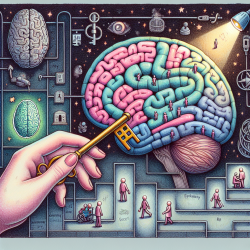Discovering the Genetic Link to Stuttering: A New Frontier in Speech Therapy
Stuttering, a speech disorder affecting millions worldwide, has long been a subject of scientific inquiry. Recent research has unveiled a fascinating genetic component to this condition, specifically mutations in the AP4E1 gene. This discovery opens new avenues for speech therapists and educators to tailor interventions and improve outcomes for individuals who stutter.
The Study: Unveiling Neuroanatomical Anomalies
The study titled "Neuroanatomical anomalies associated with rare AP4E1 mutations in people who stutter" provides groundbreaking insights into the brain structures affected by these genetic mutations. Researchers found that individuals with AP4E1 mutations exhibit reduced grey matter volume in the thalamus, visual areas, and posterior cingulate cortex. Additionally, there is decreased fractional anisotropy in the corpus callosum, a finding consistent with previous studies on stuttering.
Implications for Practitioners
As a practitioner, understanding the genetic underpinnings of stuttering can enhance your approach to therapy. Here are some ways to integrate these findings into your practice:
- Personalized Therapy: Consider genetic testing for clients who stutter to identify potential AP4E1 mutations. This can help tailor therapy strategies that address specific neuroanatomical anomalies.
- Targeted Interventions: Focus on exercises that enhance brain plasticity, particularly in the thalamus and corpus callosum, to improve speech fluency.
- Collaborative Research: Engage with geneticists and neuroscientists to explore further the relationship between AP4E1 mutations and stuttering. This collaboration can lead to innovative therapeutic approaches.
Encouraging Further Research
The study's findings are a call to action for continued research in the field of speech therapy. By exploring the genetic and neuroanatomical aspects of stuttering, we can develop more effective interventions and support systems for individuals affected by this condition. Practitioners are encouraged to stay informed through conferences, publications, and webinars to keep abreast of the latest developments.
Conclusion
The discovery of neuroanatomical anomalies associated with AP4E1 mutations in people who stutter is a significant step forward in understanding this complex disorder. By integrating these insights into practice and fostering further research, practitioners can play a pivotal role in transforming the lives of those who stutter.
To read the original research paper, please follow this link: Neuroanatomical anomalies associated with rare AP4E1 mutations in people who stutter.










